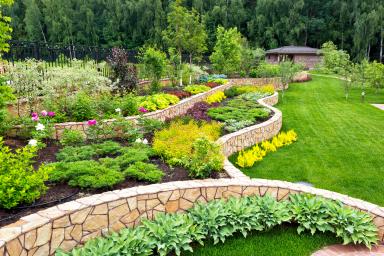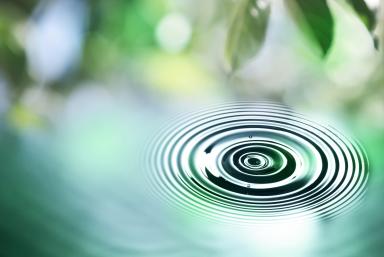A Homeowners' Guide To Sustainability

Sustainability often gets associated with going green or eco-friendly and while that isn’t wrong, these are just some of the facets of sustainability. When sustainable practices are the main goal of an individual or group, they are seeking to ensure that what they are doing will not only avoid harming the future but also create the betterment of the future -- which is why it is often associated with being environmentally friendly.
Often people are interested in making the step to be more responsible in their lives but are concerned that they alone are not able to make the world suddenly become greener, earth-friendly, or eco-conscious. Surprisingly it is very easy, even on the smaller scale of individual actions, for someone to live a more sustainable life and build (both literally and otherwise) a home that is focused on sustainability. These small actions have a huge impact on the wider world and are ripples that will manifest in larger and more widespread change.
Below you will read about ways that the individual at the home level can work towards sustainability. What makes a home more sustainable and why does it even matter? How can families take steps to sustainable practices in their homes? All these questions and more will be answered below!
Cut Down On Waste
Reconsidering the way you dispose of items in your house is an important way to start incorporating sustainability in your home. Just changing how your household gets rid of containers, food, clothing, etc. can help the environment and help you start going green.
Everything that you send into the trash to be collected by garbage trucks goes into landfills. Once that waste reaches that landfill, it will either stay in the landfill or be incinerated, both of which greatly contribute to greenhouse gases that begin to eat away at the ozone in our atmosphere. This in turn causes climate change to speed up and continue to negatively affect our planet.
Reduce, Reuse, and RECYCLE!
By recycling in your household, you can help to reduce greenhouse gases that are being produced in landfills and at incineration facilities. Not only that, but by recycling materials, it decreases the need to acquire more raw materials to produce more containers and materials. Recycling paper, plastics, and some metals, etc., gives more recyclable material to create goods made from recycled materials. Depending on the type of material that is recycled, creating new materials from recycled materials can create energy savings ranging from 30-97%.1
Check with your local government or sustainability clubs to see how your area handles recycling. Some areas have more stringent systems or rules in place, which can be good or bad for sustainability depending on how much access it gives its population.
Composting Your Biodegradables
Many items that you will throw away in your daily life that are not recyclable can often just be composted. Biodegradable materials, such as food products or products specifically made to be composted, can add to the production of greenhouse gases if you send them to the landfill. So even though you may think that throwing your banana peel into the trash is going to help with the biodegrading happening in landfills, it is actually causing more harm than good.
By composting biodegradable products, either at home in your own compost pile or at industrial composting facilities will create much less methane and emissions from greenhouse gases. You can even use your composted materials as fertilizers, replacing the need for chemical fertilizers, for your garden and lawn. This will also aid in the nutrition of your lawn.2
Steps you can take:
Start a compost pile OR find a compost facility nearby
Reduce what you are sending to the landfill by taking out all biodegradable material. Any sort of table biodegradable product, food products, etc. can be put in your compost.
Get a smaller trash can
Having a smaller trash can will really wake you and your household up as to how much you throw away. A smaller trash can will also help you see how you need to adjust your waste management habits to reduce the amount of waste your house sends to the landfill.
Reuse and recycle
Any container or materials that you have used, see if you can find another purpose for. If you have some leftover jars, use them as a leftover container. Reuse cardboard boxes for the next time you need to send a package. Anything that you cannot reuse, see if you can recycle it. Allow that item to be broken down and reused as something else.
Reduce Your Natural Resources Footprint
Being cognizant of how much water and energy you use is also an important step in creating a more sustainable household. Most people do not take into consideration how much energy and water they use on a daily basis. By focusing less on the consumption of water and energy and more on its conservation will have considerable improvements on both the environment and your bottom line.
Reduce Water Usage
When you are taking steps to consume less water in your daily hygiene and cleaning routines, you will reduce the amount of water that is being taken from natural sources. In addition to reducing the amount taken from nature, using less water reduces that amount that is needed to go through wastewater treatment after you use it, which in turn will also reduce the amount of energy needed at those facilities.3
Along a similar vein, when you use water, it is very much connected to the usage of energy. You use energy to transport the water, heat water, and run the washing machine and dishwasher. By conserving water you will also be conserving energy.4
Reduce Energy Usage
Most energy that is produced is from non-renewable sources, such as fossil fuels, which lead to the pollution of water and air and the eventual thinning of the atmosphere from greenhouse gasses.5 When you are focusing on conserving energy in your household, either through reducing water usage or general energy usage in your house, it will lead to cleaner air and the environment by using fewer energy sources that lead to the depletion of the ozone.6
Steps you can take:
Turn off the faucet during your morning routine
A huge bad habit many people have is leaving the water running when brushing your teeth and washing your face. Only turn your faucet on when wetting your brush and rinsing your mouth when brushing your teeth.
Take baths instead of showers
Some people think that showers waste less water because they are “quicker” than bathing, however, this is not true! Showering actually uses much more water than baths because a bath is filled with only a specific amount of water whereas a shower continues to produce water.
Air dry your hair
Drying your hair naturally in the air uses far less electricity than using a hairdryer which uses electricity to power a fan and a small heating coil. Save the hairdryer for special occasions!
Unplug appliances when not in use
A lot of energy use actually happens when appliances are not even in use. Large electronics like TVs, printers, etc. will still use some energy even when they are not in use. If you unplug them, this will reduce energy usage in your home. Additionally, smaller electronics, such as charger cords, can be attached to power strips and you can turn the power strip off when you are not using those electronics.
Install low energy appliances and lightbulbs
Technology is so impressive nowadays! Make sure you are buying low-energy lightbulbs, washing machines, refrigerators, etc. These devices are engineered to perform highly on low energy. Some Smart devices and appliances can be programmed even further to include timers or other starting/stopping mechanisms. You can even control some with your Smartphone, whether you are home or not!
Keep the fridge full
An empty fridge uses more energy to keep the inside cool than a full fridge. Try to keep your fridge full even if it is not with food. You can keep large containers of water in your fridge as they will maintain cooler temperatures and keep the fridge cool, causing your fridge to use energy less frequently to cool the contents.
Stay Mindful When Shopping
Building a sustainable home also happens with your choices outside of the house and in your grocery stores. When you make purchases at your grocery store, big-box superstore, or even local businesses, you can decide to purchase in a way that is sustainable.
Purchase Natural/Eco-friendly Products
Selecting items that are certified natural and eco-friendly products is a great way to go green. Products that are greener are typically produced in ways that reduce carbon emissions, whether that is in the means of production or the use of recycled materials. Greener products frequently have less packaging and therefore create less waste from wrappers and other plastic materials. More natural foods will also create healthier food options in your household, reducing processed foods.
More natural products are often created with materials that avoid chemicals that can result in harm to you and your household, in the form of reducing asthma issues, burns, allergic reactions, etc., but also chemicals that might harm the environment.
Beyond just the environment, greener products are typically sensitive to culturally sustainable practices as well, such as working with companies, factories, and suppliers who seek to improve economic status, social development, and ethical practices around the world.7
Avoid Single-Use Containers
A major factor contributing to pollution of the environment is the use of single-use containers, due in part to the mass throw-away culture. This can be from the plastic forks and containers from take-out food to the shampoo bottle that you throw away after it is empty.
Worldwide there are about 300 million tons of plastics created each year. Most of these plastics are often not recycled, due to consumer choice or a lack of recycling facilities, and these plastics will only break down into smaller and smaller pieces. Eventually, microplastics remain which are dangerous to humans, wildlife, and the environment. Microplastics can build up and cause blockages in humans and wildlife and the chemicals within the plastics can seep out and harm the environment.
Plastics that do not break down will often find their way into waterways. Scientists estimate that about 4.8-12.3 million tons of plastic enter the ocean from coastal populations. It is projected that by 2050 there will be more plastics in the ocean than fish.8
Single-use containers contribute greatly to this plastic pollution. Reusing containers or even buying reusable specific containers, help to reduce the pollution of the environment.
Steps you can take:
Reusable bags
When shopping, use reusable bags or paper bags that you can recycle. Try to reduce the amount of single-use plastic shopping bags in the world!
Reusable containers
Use reusable water bottles that you can refill or reusable coffee mugs the next time you go to the coffee shop. You can even take food containers when you go out to eat to take home your leftovers.
Avoid plastic produce bags
When getting produce at the grocery store either use your own reusable produce bags or omit the bag altogether and put it in your cart. Make sure to wash your produce when you get home!
Buy items with less packaging or in bulk
Try to purchase items that have less packaging on them - fewer plastics and paper in your cart (real or Amazon!) means fewer plastics need to be made or less in the landfill. Consider buying certain brands or products in larger bulk amounts.
Buy items made from recycled materials
Many products are made from recycled materials, and many companies boast this (as they should!). Look out for brands and products that are made from recycled materials and buy from them!
Buy items that can be recycled or composted
When shopping, try to buy products that you know can be recycled or composted. Recyclable materials are noted by the infamous recycling triangle stamped somewhere on the product, and composted materials are usually produced or vegetation that will decompose quickly.
Practice Sustainable Gardening and Landscape
Gardening and landscaping, while it might automatically seem to be good for the environment, might actually be done in a way that is detrimental. Considering how you treat and maintain your home garden and your lawn can help make your household more sustainable.
Often people will select plants based on their looks without concern for whether it is the correct climate for that plant. If you live in a drier climate, but get a tropical plant, you will end up using a lot of water and increasing both water and energy consumption to provide enough water to the plants.9 If water is not used correctly in your lawn care and gardening practices, it can lead to water runoff, an increase in water pollutants, and depletion of groundwater reserves.10
In addition, when selecting treatments, such as fertilizers or insecticides, these can lead to decreased soil health and pollution of water. Even by using certain tools in landscaping and gardening, you might be increasing your carbon footprint through fossil fuel emissions.11
Steps you can take:
Use own compost or natural fertilizers
When tending to your garden, use the compost you make from leftovers and such to bring nutrients to your produce. Try to use natural fertilizers that you can purchase at your local lawn and garden center.
Collect rainwater & use nonpotable water for your lawn and garden
Rather than deplete water sources by using the outside water spigot, consider using a rainwater collection system. Then you have a supply of nonpotable water that you can then use to water your garden and lawn. This avoids the unnecessary strain on local groundwater reserves and city water supplies.
Plant indigenous plants
When selecting plants for your lawn and garden, select plants that naturally thrive in your climate. Make sure you avoid invasive plant species! Check the amount of rainfall and type of soil that the plant requires; if it matches your local area’s climate, feel free to add it to your garden!
Use an eco-conscious sprinkler or irrigation systems
If you do need to use a sprinkler or irrigation system for your landscaping or gardening, consider using a more eco-friendly system, such as drip irrigation or smart sprinkler systems, which know when they need to water your lawn or garden. This will help avoid over watering and runoff as well as conserving water.
Grow your own produce
Eating the vegetables and fruits that you grow from your own garden produces a unique and lovely kind of happiness! I highly recommend it! In addition to that, it is also a great sustainable practice because you save the produce at the local grocer for someone who can’t or doesn’t garden. Also, no fuel was used to bring your garden and its succulent riches to your kitchen!
Conclusion
All of these actions are sustainable and have the potential to bring great, positive change to our world! Even the actions of one can make a difference, but we must still ask larger institutions and political forces to change the unsustainable features of our government, nation, and world. Until then, even adopting one or a few of these actions will help you live a sustainable life.
So, in summary, here are the things you can do to be more sustainable in your life!
Check your waste habits
Check local recycling guidelines and recycle
Start a compost for your garden (see if your area collects for compost!)
Reduce water consumption
Reduce energy consumption
Purchase natural/eco-friendly products
Buy reusable products and avoid single-use containers
Start a garden and grow your own food with your compost
A. L. KincaidAuthor
A.L. Kincaid is a Social Studies/Latin teacher turned freelance writer. When she is not writing, she can be found traveling, gardening, or reading the latest sci-fi/fantasy fiction release!
Sources
1. https://eurekarecycling.org/wp-content/uploads/2019/08/composting_factsheet_0.pdf
2. https://eurekarecycling.org/wp-content/uploads/2019/08/composting_factsheet_0.pdf
3. https://www.energystar.gov/products/saving_water_helps_protect_our_nations_water_supplies
4. https://www.home-water-works.org/energy-water
6. https://www.saveonenergy.com/learning-center/post/why-save-energy/
7. https://louisville.edu/purchasing/sustainability/greenpurchasingsupplychain
8. https://www.nrdc.org/stories/single-use-plastics-101
9. https://www.energystar.gov/products/saving_water_helps_protect_our_nations_water_supplies
10. https://water.unl.edu/article/lawns-gardens-landscapes/sustainable-landscapes
11. https://ahsgardening.org/gardening-resources/sustainable-gardening/




